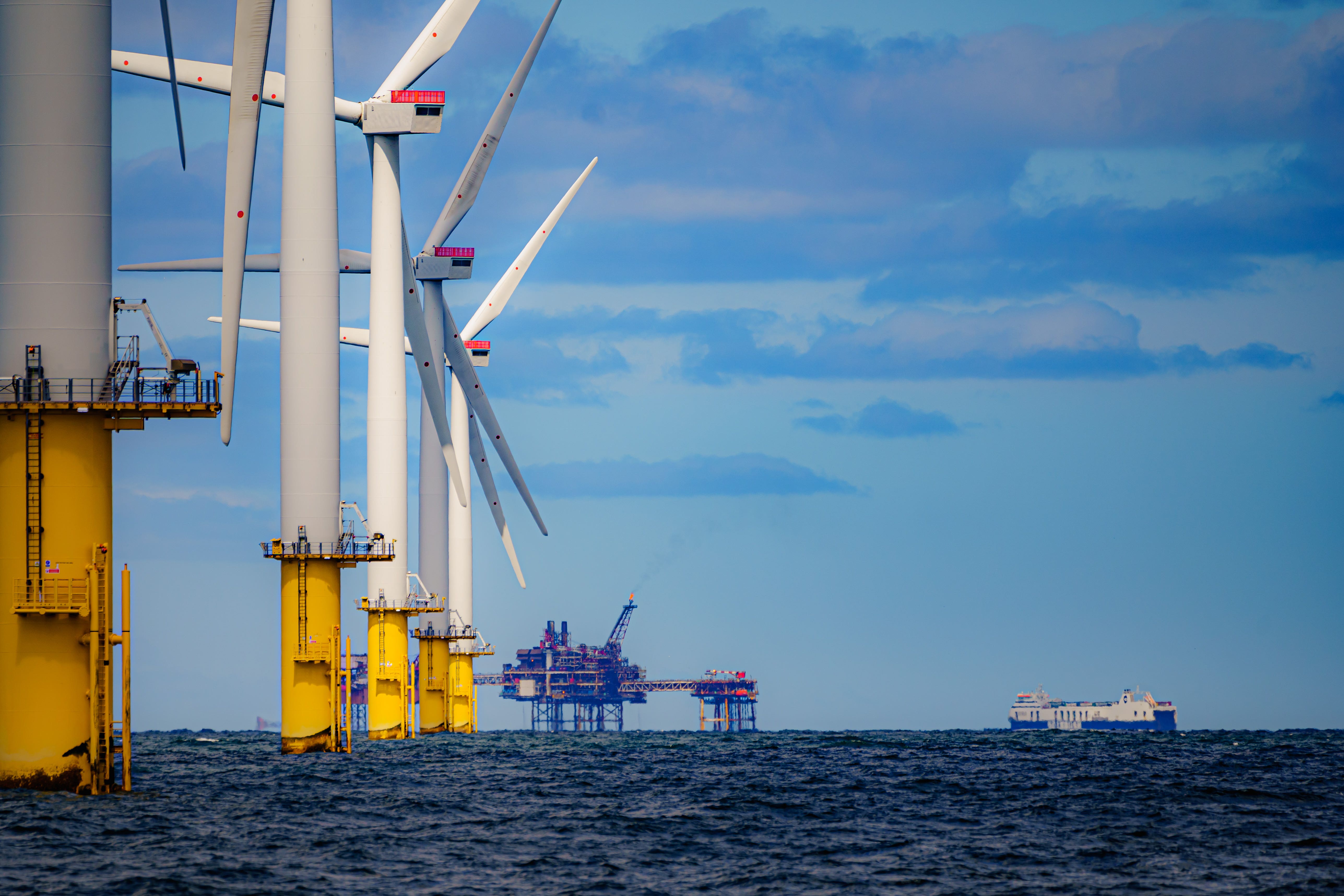Prices new wind and solar farms can charge are hiked after failed summer auction
The Government has changed the maximum price that an offshore wind farm can charge after it failed to attract any new projects earlier this year.

Your support helps us to tell the story
From reproductive rights to climate change to Big Tech, The Independent is on the ground when the story is developing. Whether it's investigating the financials of Elon Musk's pro-Trump PAC or producing our latest documentary, 'The A Word', which shines a light on the American women fighting for reproductive rights, we know how important it is to parse out the facts from the messaging.
At such a critical moment in US history, we need reporters on the ground. Your donation allows us to keep sending journalists to speak to both sides of the story.
The Independent is trusted by Americans across the entire political spectrum. And unlike many other quality news outlets, we choose not to lock Americans out of our reporting and analysis with paywalls. We believe quality journalism should be available to everyone, paid for by those who can afford it.
Your support makes all the difference.The amount that wind farm builders can charge for the electricity they supply to British homes will be hiked in a bid to avoid a repeat of the Government’s failed wind auction last summer.
Offshore wind projects that want to win a Government contract next year will be allowed to bid up to £73 per megawatt hour (MWh) to supply power, compared with this year’s maximum of £44.
The Government said the change was necessary after inflation interrupted the trend where renewable energy had fallen for years.
Last summer wind farms could charge less than a third of what they were allowed to charge in 2015.
But inflation has caused a major retreat from the developers in the sector.
Earlier this year Swedish energy giant Vattenfall abandoned plans to build a wind farm off the coast of Britain.
The company said its costs had ballooned 40% since it signed a contract to sell electricity for no more than £37.35 per MWh from that site, a joint record low at the time.
Denmark’s Orsted has withdrawn from wind projects in the US for the same reason.
And this summer no companies bid to build an offshore wind farm in the latest auction round of the so-called Contracts for Difference (CfD), the scheme which guarantees a fixed price per MWh for renewables developers.
The new proposals also hike the maximum price that a solar farm is allowed to charge from £47 to £61 per MWh, while floating offshore wind – an emerging technology – will rise from £116 to £176 per MWh.
The maximum price for tidal power will rise from £202 to £261 per MWh, and the geothermal price from £119 to £157. The prices are all in 2012 money.
The trade-off of the decision is that it could mean higher bills for electricity customers in 10 years from now when the projects are built.
Even at these new prices, there is still no cheaper way to meet the UK's rising electricity demand and increase our energy security.
However, if no changes were made no offshore wind turbines might be built.
Seeing as even at the new price offshore wind is cheaper than gas, that would in reality mean higher prices for customers.
Industry insiders say that the £73 price is a maximum, and the system incentivises them to compete below this amount, otherwise they risk not having their projects chosen.
The new cap is also still less than the £75 per MWh charged by Triton Knoll, which was until just a few weeks ago providing the cheapest offshore wind power in Britain.
It is also less than half the £155 that offshore wind was allowed to charge in the 2015 auction.
Triton Knoll was knocked off the “cheapest operating offshore wind farm” pedestal when the first turbine at SSE’s Dogger Bank started producing electricity just a few weeks ago.
At £73 in 2012 prices, or around £95 in today’s money, offshore wind will also still be cheaper than today’s electricity, whose price is set by gas.
At the time of writing early on Wednesday evening, the price of one MWh of electricity was £154. Over the past year the average price has been around £114.
The Government wants around 50 gigawatts (GW) of offshore wind turbines installed in British waters by 2030.
Only around 14 GW have been installed to date.
“We recognise that there have been global challenges in this sector and our new annual auction allows us to reflect this,” said Energy Security Secretary Claire Coutinho.
The new announcement from the Government also includes proposals including a separate pot for offshore wind, and ways for projects to earn more money if they increase their social impact or reduce their environmental footprint.
Dan McGrail, who leads the RenewableUK trade body, said that at least 10 new offshore wind farms might be built as a result of the next auction round, which could reduce the amount of gas that Britain needs to generate electricity by 39%.
“Even at these new prices, there is still no cheaper way to meet the UK’s rising electricity demand and increase our energy security,” he added.
ScottishPower chief executive Keith Anderson said: “This is a welcome signal that the Government is listening and is committed to getting the UK’s pipeline of offshore wind projects moving again.
“The real test of that ambition will come when the overall budget for the next auction round is set next year. But, no doubt about it, this is a step in the right direction.”
Chris Hewett, chief executive of Solar Energy UK, said: “Solar remains the cheapest source of power in the UK, according to the Government’s own figures, although lately installation costs have been affected by factors outside the control of the industry, notably the war in Ukraine.”